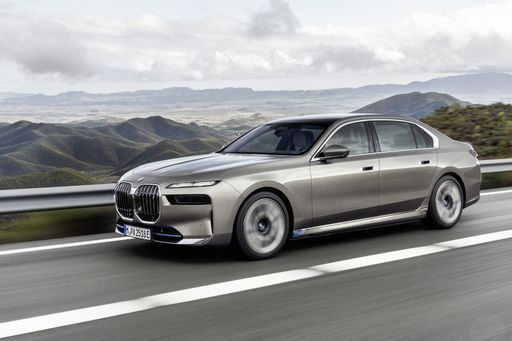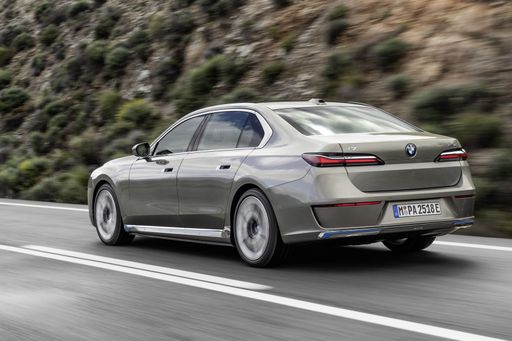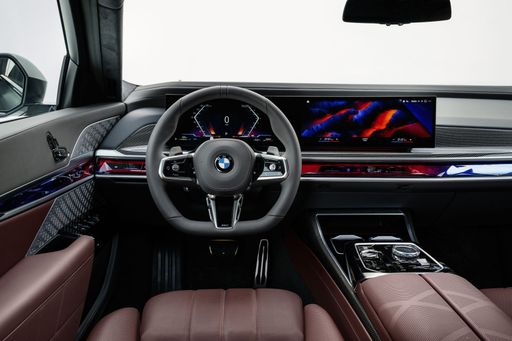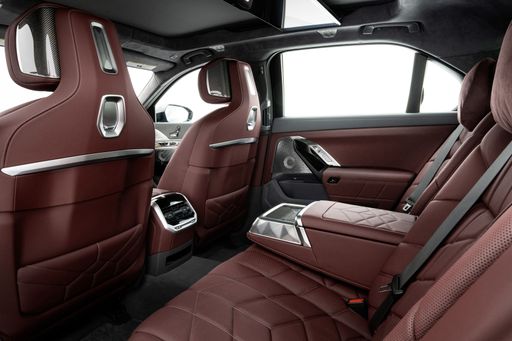BMW i7 vs Volvo ES90 – Which car suits you better?
Both models have their strengths – but which one suits you more?
Compare performance, efficiency, price and space directly: BMW i7 or Volvo ES90?
Costs and Efficiency:
Price and efficiency are key factors when choosing a car – and this is often where the real differences emerge.
Volvo ES90 has a decisively advantage in terms of price – it starts at 61700 £, while the BMW i7 costs 99200 £. That’s a price difference of around 37466 £.
In terms of energy consumption, the advantage goes to the Volvo ES90: with 15.90 kWh per 100 km, it’s slightly more efficient than the BMW i7 with 18.50 kWh. That’s a difference of about 2.60 kWh.
As for range, the Volvo ES90 performs somewhat better – achieving up to 700 km, about 76 km more than the BMW i7.
Engine and Performance:
Power, torque and acceleration are the classic benchmarks for car enthusiasts – and here, some clear differences start to show.
When it comes to engine power, the Volvo ES90 has a minimal edge – offering 680 HP compared to 659 HP. That’s roughly 21 HP more horsepower.
In acceleration from 0 to 100 km/h, the BMW i7 is hardly perceptible quicker – completing the sprint in 3.70 s, while the Volvo ES90 takes 4 s. That’s about 0.30 s faster.
In terms of top speed, the BMW i7 performs distinct better – reaching 250 km/h, while the Volvo ES90 tops out at 180 km/h. The difference is around 70 km/h.
There’s also a difference in torque: BMW i7 pulls distinct stronger with 1100 Nm compared to 870 Nm. That’s about 230 Nm difference.
Space and Everyday Use:
Cabin size, boot volume and payload all play a role in everyday practicality. Here, comfort and flexibility make the difference.
Both vehicles offer seating for 5 people.
In curb weight, Volvo ES90 is slight lighter – 2410 kg compared to 2595 kg. The difference is around 185 kg.
In terms of boot space, the BMW i7 offers somewhat more room – 500 L compared to 424 L. That’s a difference of about 76 L.
When it comes to payload, BMW i7 hardly perceptible takes the win – 535 kg compared to 500 kg. That’s a difference of about 35 kg.
Who wins the race?
The Volvo ES90 proves to be slightly ahead and therefore becomes our DriveDuel Champion!
Volvo ES90 is the better all-rounder in this comparison.
Volvo ES90
BMW i7
The new BMW i7 epitomises luxury and innovation, seamlessly blending advanced technology with elegant design. Its interior offers an unparalleled experience, with premium materials and cutting-edge features that create a tranquil yet engaging atmosphere for both driver and passengers. The i7's performance is both dynamic and efficient, demonstrating BMW's commitment to sustainable driving without compromising on the exhilarating drive the brand is known for.
details @ press.bmwgroup.com
@ press.bmwgroup.com
 @ press.bmwgroup.com
@ press.bmwgroup.com
 @ press.bmwgroup.com
@ press.bmwgroup.com
 @ press.bmwgroup.com
@ press.bmwgroup.com
Volvo ES90
The Volvo ES90 stands out as a luxury sedan, embodying Scandinavian elegance combined with innovative technology. Its sleek design is complemented by a plush interior that emphasizes comfort and safety, aligning with Volvo's renowned reputation. With advanced features and a focus on sustainability, the ES90 is a testament to the brand's commitment to responsible luxury.
details

|
|
|
|
|
Costs and Consumption |
|
|---|---|
|
Price
99200 - 157000 £
|
Price
61700 - 81000 £
|
|
Consumption L/100km
-
|
Consumption L/100km
-
|
|
Consumption kWh/100km
18.5 - 20.8 kWh
|
Consumption kWh/100km
15.9 - 17.1 kWh
|
|
Electric Range
559 - 624 km
|
Electric Range
651 - 700 km
|
|
Battery Capacity
101.70 kWh
|
Battery Capacity
88 - 102 kWh
|
|
co2
0 g/km
|
co2
0 g/km
|
|
Fuel tank capacity
-
|
Fuel tank capacity
-
|
Dimensions and Body |
|
|---|---|
|
Body Type
Sedan
|
Body Type
Hatchback
|
|
Seats
5
|
Seats
5
|
|
Doors
4
|
Doors
5
|
|
Curb weight
2595 - 2770 kg
|
Curb weight
2410 - 2610 kg
|
|
Trunk capacity
500 L
|
Trunk capacity
424 L
|
|
Length
5391 mm
|
Length
5000 mm
|
|
Width
1950 mm
|
Width
1942 mm
|
|
Height
1544 mm
|
Height
1546 mm
|
|
Max trunk capacity
-
|
Max trunk capacity
1427 L
|
|
Payload
480 - 535 kg
|
Payload
490 - 500 kg
|
Engine and Performance |
|
|---|---|
|
Engine Type
Electric
|
Engine Type
Electric
|
|
Transmission
Automatic
|
Transmission
Automatic
|
|
Transmission Detail
Reduction Gearbox
|
Transmission Detail
Reduction Gearbox
|
|
Drive Type
Rear-Wheel Drive, All-Wheel Drive
|
Drive Type
Rear-Wheel Drive, All-Wheel Drive
|
|
Power HP
455 - 659 HP
|
Power HP
333 - 680 HP
|
|
Acceleration 0-100km/h
3.7 - 5.5 s
|
Acceleration 0-100km/h
4 - 6.6 s
|
|
Max Speed
205 - 250 km/h
|
Max Speed
180 km/h
|
|
Torque
650 - 1100 Nm
|
Torque
480 - 870 Nm
|
|
Number of Cylinders
-
|
Number of Cylinders
-
|
|
Power kW
335 - 485 kW
|
Power kW
245 - 500 kW
|
|
Engine capacity
-
|
Engine capacity
-
|
General |
|
|---|---|
|
Model Year
2022 - 2023
|
Model Year
2025
|
|
CO2 Efficiency Class
A
|
CO2 Efficiency Class
A
|
|
Brand
BMW
|
Brand
Volvo
|
Is the BMW i7 offered with different drivetrains?
Available configurations include Rear-Wheel Drive or All-Wheel Drive.
The prices and data displayed are estimates based on German list prices and may vary by country. This information is not legally binding.
